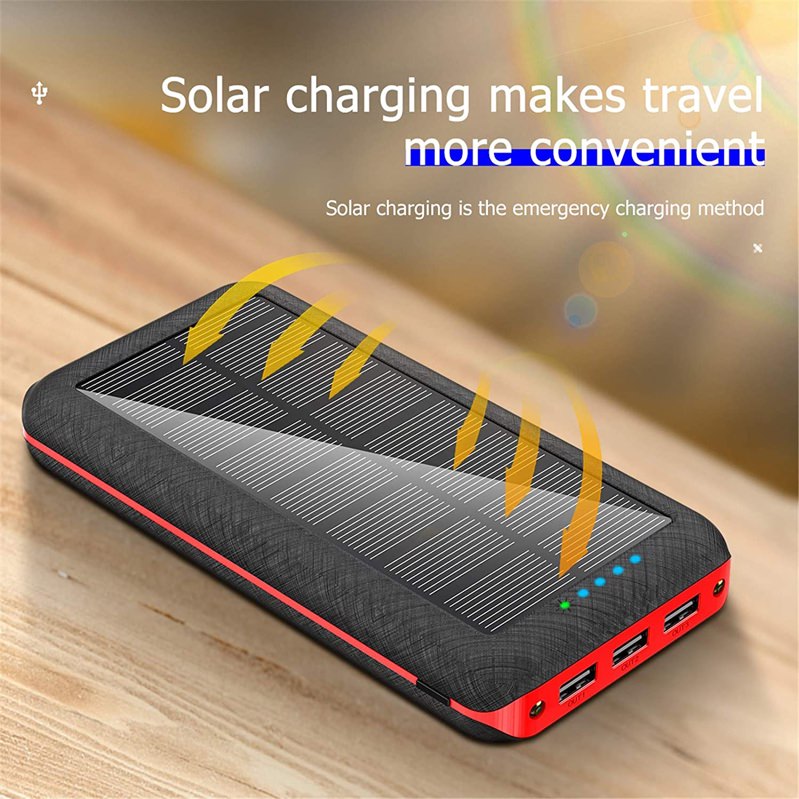I mentioned this in passing when looking at the practicalities of using solar power to power a smartphone in general, but the idea of a solar power bank deserves a little deeper comment, since it's a 'growing' accessory category.
In the feature, I'd been sent a solar power bank but it failed me on the first hurdle:
The review solar power bank, by the way, is this one, also available at a fraction of the cost and with other colour schemes from cheap Chinese sources. Unfortunately, there's a fundamental design flaw, in that the power switch pressed against a microswitch mounted at right angles to the main PCB inside, so that after a few presses the plastic and solder give way and the unit can't be turned on anymore. Great shame - I loved the concept!
I still do - love the concept, that is. But the numbers are against me/us here, so let's look beyond the hardware design flaw - what about the charging capabilities from the sun?
Again, from the original article:
But as a rough approximation, as you'll see from my results in chart form, the test 19W solar array puts out enough over the course of three hours in a moderately sunny day (in the UK, with the array laid flat, as shown) to put 5000mAh into the power bank, itself enough, after more losses, to fully charge many current 2021 smartphones...
While 'overcast' conditions would achieve the same 5000mAh but only after five or six hours outside, i.e. the entire day open to the sky. If you're interested, my gadget recorded a peak of 1.9V at noon in the sun, and was down to 0.9A on the cloudy day, which sounds about right.
But, we now have an easy to remember metric: One day of sun into one power bank = a full charge of one smartphone.
So. This was with a trifold solar array generating 19W with full sun, with charge 'cached' into a suitable power bank. Now let's look at a typical solar power bank, I've been eyeing this one up on Amazon UK:

22.5W PD output, 20000mAh capacity, twin LED torch, 10W Qi wireless output, dual input, it all looks splendid. But notice how 'solar energy' is relegated to the 'additional features' section. Now look at the dimensions, with the solar panel area roughly the size of a modern phone screen. And, crucially, about a quarter the area of each of the single panels in my 19W solar array.
And area is the crucial stat here. The ability to gather the sun's rays. So if my test array from the original article generated about 6W per panel, then this power bank-topped solar panel is going to generate about 1.5W. Ouch.
In 5V terms (i.e. USB), this is is 0.3A, which is weedy in the extreme. Now, this being a power bank/store, the maths to focus on are how long it would take to fill the 20Ah battery using just direct sunlight. Ignoring charging inefficiencies and 5V to 3.5V scaling (which kind of cancel each other out), we're looking at 66 hours in the sun to full recharge, or perhaps, as a bare minimum, 33 hours to half charge (10,000mAh), delivering a full charge (after losses) to a typical smartphone.
33 hours. As anyone who's ever played with solar charging knows, even on a sunny day you're only looking at the equivalent of about 5 hours of totalled direct energy capture, by the time you've factored in angles from a moving sun, miscellaneous occlusions and shadows, clouds, and so on. In other words, it would take a week left outdoors on (e.g.) a table to gather enough charge to re-fill a phone once. Or a fortnight in that spot to completely refill the power bank!
The power bank (and many others) do claim some degree of 'water proofing', but those open USB ports do worry me. I note there's no official IP rating, so I'd be dubious about literally leaving such a solar power bank out in the garden for so long, even when testing. And when strapped to the back of a rucksack when hiking, for example, you could put the USB ports facing down and possibly avoid electrical issues, but again you're left with it gathering less than 1/6th the charge a phone needs every day.
There's a reason that solar arrays for mobile use start at 19W and go up from there (the more you pay, the larger the area and the higher the power you get) - 19W is roughly the bare minimum to deliver enough to charge one phone per day. Anything less will disappoint and require hassle and micro-management.
So just say no to 'solar power banks'. As I said in my original article, it's far better to have separate accessories - a large folding set of panels, feeding into a decent charge store, with flexible outputs when needed.
PS. Shown below is my Choetech original, sadly no longer sold. These days I'd recommend this one from Anker.

